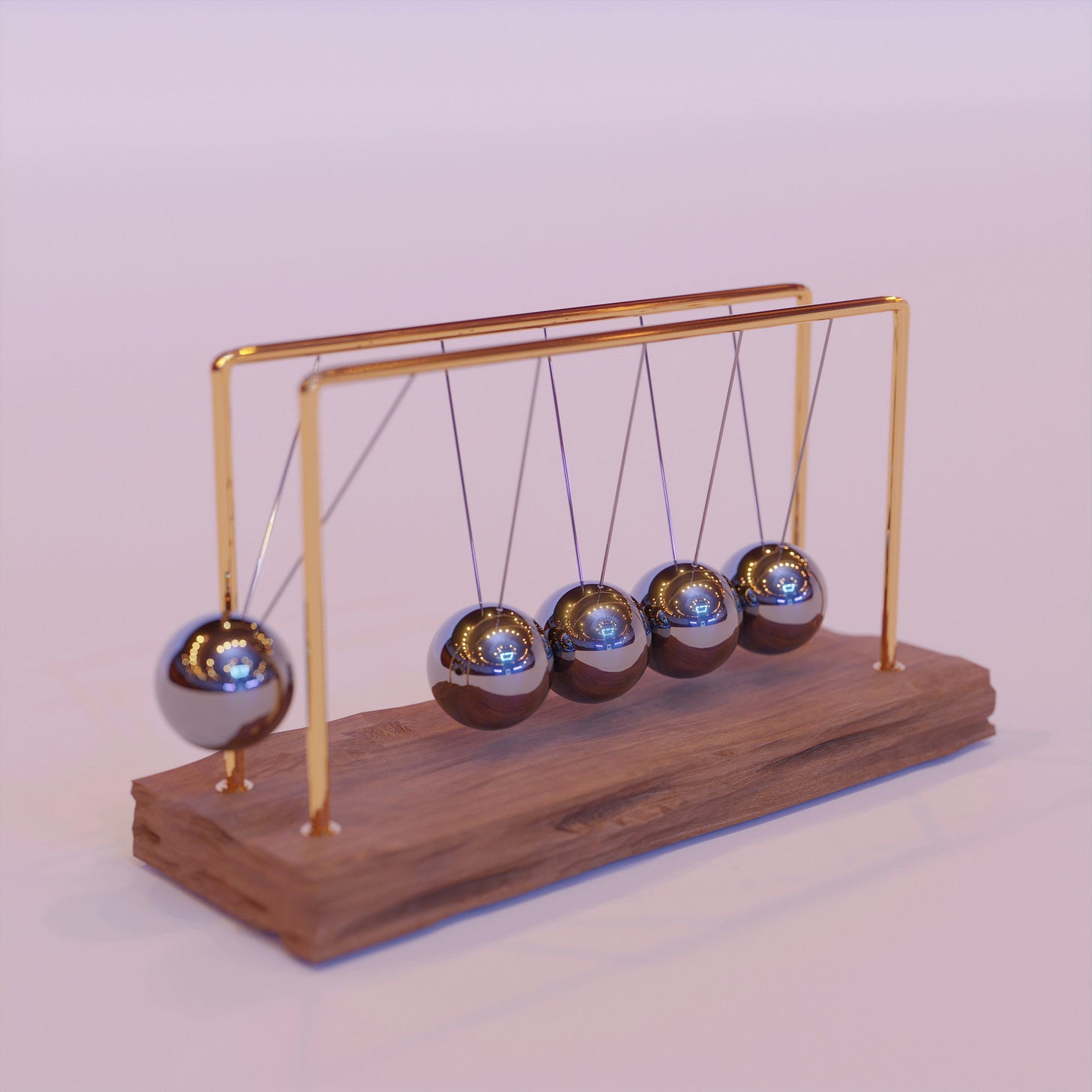How to actually run brand and performance marketing together
Stop running them in parallel. Start running them in harmony.
Most marketers say they run brand and performance together.
But if you peek under the hood, it’s usually two engines bolted to the same car, revving in different directions.
One’s chasing awareness. The other’s chasing conversions.
And both are wondering why the traction sucks.
I’ve been thinking a lot about this lately… especially as I wrap up my agency role and step into a new chapter as cofounder and head of growth at a venture studio. New projects, smaller team, and that thrilling chaos of turning vision into systems across every aspect of a business.
And one question keeps coming up in my mind:
How do you build a growth engine where brand and performance don’t just coexist, but actually reinforce each other?
Because here's the thing: the 60-40 rule from Binet & Field (60% brand, 40% performance) sounds simple on paper…

But in practice, it’s easy to fall into the trap of misaligned priorities, mismatched timelines, and creative that never quite clicks when you’re trying to juggle both (and a million other things).
So here’s the system I’m planning to implement, and what I’ve seen work at scale.
1. Start with a unified creative strategy
The problem:
Most teams build brand campaigns first, then try to retrofit them into performance ads. The result? Inconsistency, inefficiency, and confused creative.
The fix:
Build from a common platform. Your brand isn’t separate from performance—it informs it.
How to do it:
Define your core brand message in one sentence
Create a single master brief with both brand and performance goals
Develop modular assets that flex across formats
Use performance campaigns to test brand elements (messaging, colours, tone)
2. Layer your media strategy for compound effect
The problem:
Running campaigns in silos means brand and performance compete for attention instead of compounding it.
The fix:
Coordinate your media timing and targeting. Think layered, not linear.
How to do it:
Use broad-reach channels (podcast, display) for brand
Layer in targeted channels (search, social, email) to capture demand
Sequence intentionally: launch brand, then ramp performance 2–3 weeks later
Share signals, not just stats: use scroll depth, time on creative, or video views to understand who’s warming up—not just who converted
3. Measure the full funnel
The problem:
Brand metrics measure awareness. Performance metrics measure conversions. Neither tells the full story.
The fix:
Build a unified measurement model that spans the whole journey—from first touch to post-purchase sentiment.
How to do it:
Track brand: unaided awareness, recall, sentiment, consideration
Track performance: CTR, CPA, LTV, ROAS
Measure overlaps: assisted conversions, brand lift, view-through attribution
Run simple brand tracking surveys to understand how perception shifts over time
4. Design your workflow for context switching (and sanity)
The problem:
When you're running both brand and performance, context switching kills momentum. It’s easy to get stuck in execution mode without stepping back to see how it all connects.
The fix:
Structure your week and tools so that brand and performance inform each other—without burning you out.
How to do it:
Use one central doc or dashboard to track both brand goals and performance metrics
Block time: dedicate specific days to strategic planning vs. channel execution
Document insights weekly—especially which brand ideas are driving conversions
Revisit brand positioning every 4–6 weeks using real data, not just gut feel
5. Optimise the mix based on stage
The problem:
The 60:40 rule isn't universal. It depends on your company stage and market conditions.
The fix:
Tailor your brand/performance split to your growth stage and resource constraints.
Early Stage (0-$1M ARR):
20% brand, 80% performance
Focus: proving product-market fit
Brand effort: nail your positioning and messaging
Growth Stage ($1M-$10M ARR):
40% brand, 60% performance
Focus: scaling what works while building differentiation
Brand effort: invest in creative that makes performance more efficient
Scale Stage ($10M+ ARR):
60% brand, 40% performance
Focus: defending market position and premium pricing
Brand effort: full omnichannel brand building
What this looks like in practice
Weekly operating rhythm for solo/small teams:
Monday – Review performance data and identify high-performing creative
Tuesday – Use those insights to refine brand messaging and visuals
Wednesday – Plan upcoming campaign sequencing and targeting
Thursday – Run quick brand tracking polls or customer calls
Friday – Optimise performance channels based on brand learning
How brand and performance marketing work together:
Brand sets the emotional context that makes performance more efficient
Performance gives you fast feedback on which brand ideas actually land
Coordinated timing = frequency without fatigue
Shared signals = sharper creative and smarter targeting
Stop treating brand and performance as rivals. One creates demand. The other converts it when the prospect is ready. Together, they build momentum.




Performance of the product should match the messages given... (Taurus excreta cerebrum vincit)
i.e.: whiter laundry, whiter teeth, longer lasting....
:) :) xxx